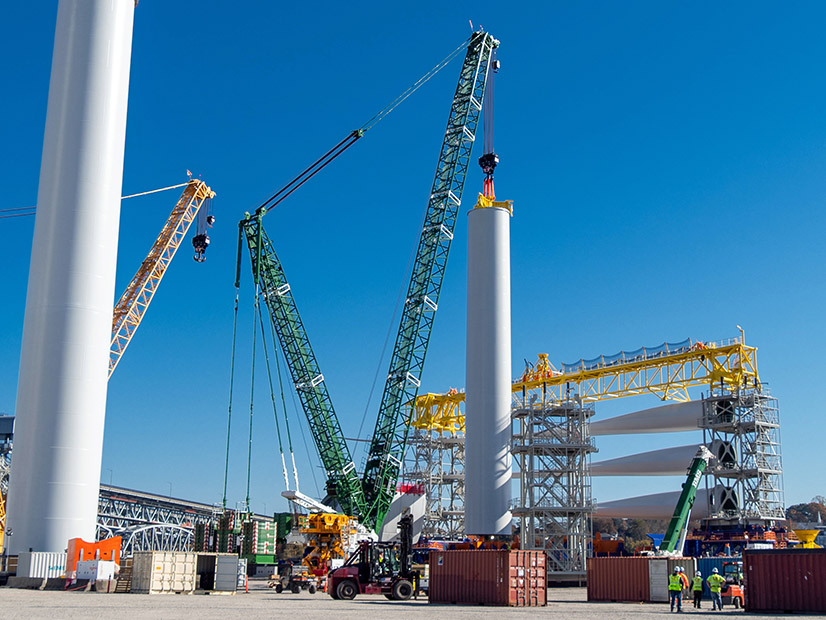
The Connecticut Department of Energy and Environmental Protection launched two new clean energy solicitations Oct. 27.
The first request for proposals calls for up to 2,000 MW of new offshore wind capacity and includes provisions to avert the problems plaguing the offshore wind industry.
The onshore solicitation is broader: Developers can propose most types of clean energy technology in response, including solar, wind, zero-carbon fuel cells, geothermal, energy efficiency, run-of-river hydropower, and energy storage paired and co-located with a zero-carbon resource.
The onshore solicitation is intended to provide up to 3.975 million MWh, or about 15% of the state’s electricity load.
The two solicitations are designed to move the state closer to its statutory goals of a 100% zero-carbon electric portfolio by 2040 and greenhouse gas emissions at least 80% lower than 2001 levels by 2050.
The offshore solicitation comes at a difficult time for the young U.S. offshore wind industry.
Earlier in October, Avangrid reached an agreement to cancel power purchase agreements for its Park City Wind project, which would send up to 804 MW to Connecticut. Two major offshore projects in Massachusetts canceled their PPAs this year, and three major New York projects are considering doing the same.
The developers will likely attempt to rebid the projects they have invested billions in, but such a move would inevitably increase ratepayer costs and delay start of construction.
The problem in each case is the same: Developers’ costs for building the projects soared after they locked in the income they would receive from operating the completed projects.
Connecticut’s new offshore solicitation gives bidders a cost-indexed option allowing an up-or-down price adjustment of up to 15% based on inflation and other factors between bid submission and financial close.
Also new in this offshore wind solicitation is the option of submitting a multistate bid. In early October, Connecticut, Massachusetts and Rhode Island agreed to coordinate their offshore development efforts. Each state has been having significant difficulties in the sector, and they hope collaborating will increase efficiencies while reducing cost and risk.
The three states have now issued requests for proposals for a combined 6.8 GW of new offshore wind capacity in the space of two months.
Connecticut has included specific environmental requirements in the solicitations:
Onshore proposals must conform to the state’s broader environmental policy goals. Development in core forest is prohibited, as are solar projects on slopes greater than 15% and development on prime farmland, unless a proposal meets specific dual-use requirements.
The offshore solicitation includes a requirement for robust environmental and fisheries mitigation plans and imposes fees of at least $15,000/MW for fish and wildlife monitoring and mitigation.
Bids are due by Jan. 31. DEEP said another request for proposals — this one for energy storage — will be released in draft form this year.
“Grid-scale clean energy projects are critical investments to diversify our grid, which will help protect Connecticut residents and businesses from price spikes linked to global fossil fuel markets and geopolitical events, while making our energy supply more reliable and our air safer to breathe,” DEEP Commissioner Katie Dykes said in a news release. “Continuing to make progress toward a zero-carbon grid is essential, as the public health and economic costs of carbon pollution are now being felt more regularly and severely here at home.”


